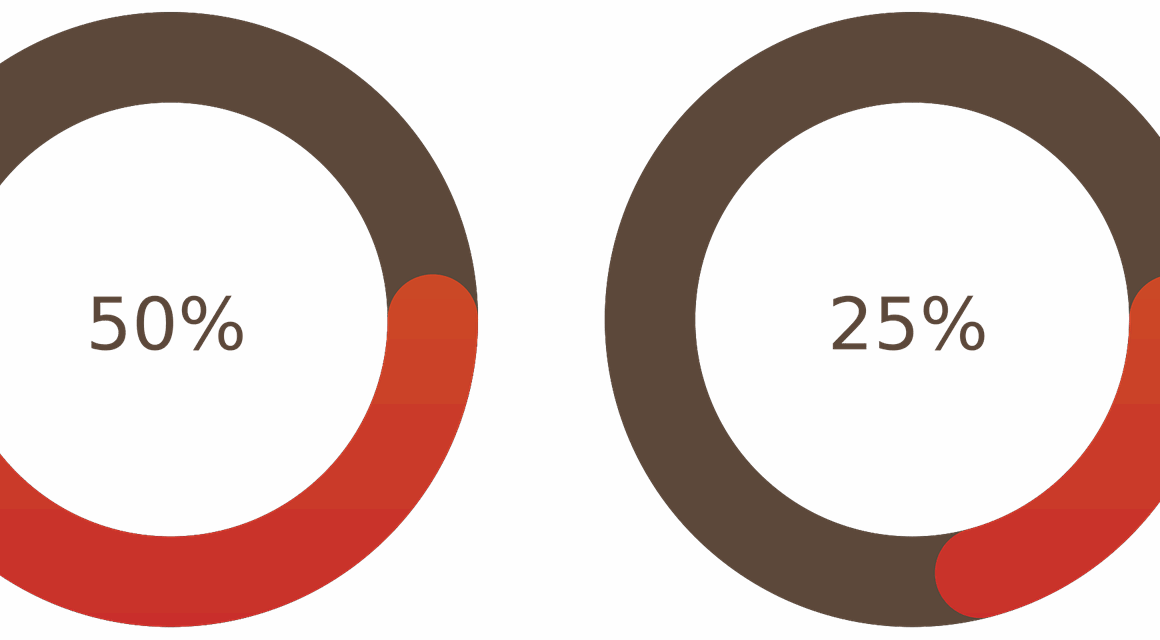How AI Tracks and Improves Flexibility Over Time
Artificial Intelligence (AI) has made significant strides in the area of monitoring progress, influencing various sectors like health and finance. This capability helps organizations pinpoint inefficiencies while boosting flexibility and adaptability. By analyzing extensive datasets, AI can identify patterns and trends that human analysis might miss, which allows for real-time adjustments. Businesses leveraging AI for monitoring are increasingly able to adapt their strategies based on precise data, rather than intuition, resulting in improved operational efficiency. AI’s predictive analytics offer insights into future trends, assisting companies in planning their initiatives effectively. This proactive approach not only enhances flexibility but also drives innovation. Moreover, AI tools can generate dashboards with key performance indicators (KPIs) that teams can use to measure their progress consistently. This dynamic feedback mechanism promotes a culture of continuous improvement and responsiveness. As organizations implement AI, they experience increased agility in their decision-making processes. Thus, the emphasis on data-driven strategies powered by AI reinforces the importance of adaptability in today’s fast-paced environments, ensuring that companies remain competitive and innovative.
The Role of Data Analytics
Data analytics plays a vital role in how AI monitors progress and enhances flexibility. By extracting insights from vast amounts of data, organizations can make informed decisions tailored to their goals. AI-driven analytics tools enable the collection and processing of data in real-time, making it easier to identify immediate opportunities and challenges. This process leads to a more agile response strategy, with teams able to pivot as needed. Furthermore, the integration of AI analytics with traditional business intelligence accelerates the transformation of data into actionable insights. Organizations leveraging these insights can prioritize initiatives based on data-backed outcomes, improving overall flexibility. AI technologies also support scenario modeling, allowing businesses to simulate various strategies before implementation. This capability leads to better-informed decisions that reflect desired outcomes. For instance, marketing teams can tweak campaigns while analyzing customer responses, enhancing engagement and conversion rates. Consequently, data analytics not only helps in tracking progress but empowers organizations to modify their approaches proactively, ensuring they stay relevant. As AI advances, the synergy between data analytics and corporate flexibility will continue to redefine operational paradigms globally.
The introduction of machine learning algorithms has revolutionized how AI facilitates monitoring progress, especially in dynamic environments. Machine learning empowers AI systems to learn from past experiences and adapt to changing scenarios without explicit programming. This adaptability is significant as it helps organizations to fine-tune workflows progressively. For example, in manufacturing sectors, AI can monitor the availability of equipment, predict maintenance needs, and adapt production schedules accordingly. By predicting equipment failures before they occur, companies reduce downtime and improve efficiency considerably. Moreover, this proactive monitoring allows businesses to allocate resources effectively, maximizing productivity while minimizing waste. As machine learning continues to evolve, its applications in monitoring will grow deeper and more sophisticated. The agility provided by machine learning capabilities translates to a competitive edge for enterprises. Overall, businesses are witnessing improved adaptability in their operational strategies and increased performance metrics when employing machine learning in their AI frameworks. Those who invest in these technologies will likely maintain their market position and enhance their profitability over time. In summary, the utilization of these innovative systems is crucial for modern business success and sustainability.
Visualizing Progress with AI
Visualization tools powered by AI are essential for tracking progress effectively, providing clarity through graphical representations. By using automated dashboards, organizations can monitor KPIs visually, which simplifies interactions with complex datasets. Visual data can help stakeholders quickly grasp performance trends and understand insights without delving into raw data. Furthermore, these visual tools can adapt to user preferences or specific metrics, ensuring that the most relevant information is always highlighted. AI-driven visualization also aids in pinpointing areas that require immediate attention, accelerating decision-making. For instance, sales teams can visually track performance against targets, adjusting strategies based on real-time figures. This proactive monitoring fosters a culture of accountability amongst team members, reinforcing the focus on achieving collective goals. Additionally, AI visual tools often include predictive elements, forecasting future trends based on historical data. This capability allows for informed strategic planning and timely adjustments to organizational strategies. Ultimately, these advanced visualization capabilities greatly enhance flexibility and responsiveness, essential traits for any organization navigating competitive markets in the modern age. Therefore, it becomes clear that AI is not just a tool for tracking progress; it is a transformative force in how businesses visualize success.
The implementation of AI for monitoring progress also emphasizes the importance of human-AI collaboration within teams. While AI can analyze data and provide insights rapidly, the interpretation and application of these insights necessitate human expertise. By collaborating with AI systems, teams can leverage their strengths while maintaining decision-making authority in the face of automation. For example, project managers can utilize AI recommendations to identify project risks but ultimately decide how to mitigate these challenges effectively. This partnership encourages a more agile and flexible approach to project management, facilitating faster responses to unforeseen issues. Furthermore, fostering a collaborative environment aids in building trust between AI technologies and human team members as transparency becomes paramount. Training sessions on effectively utilizing AI tools can empower employees, enhancing their skill sets and confidence. As familiarity with AI increases, teams become more adept at recognizing its limitations and therefore manage expectations successfully. Moreover, blending human creativity with AI’s analytical prowess can lead to innovative solutions that remain unattainable through isolated efforts. In summary, enhancing flexibility thrives in environments where human insights refine and complement AI contributions while maintaining accountability.
Overcoming Challenges in AI Monitoring
Although AI holds great promise for enhancing flexibility through progress monitoring, several challenges must be addressed for successful implementation. Data privacy and security concerns remain prevailing issues as organizations navigate extensive data collection. Establishing protocols to safeguard sensitive information is paramount, ensuring compliance with regulations and building stakeholder trust. Moreover, sometimes, the absence of standardized metrics for success can hinder effective AI application; this inconsistency may lead to misleading interpretations of progress. Therefore, organizations must clearly define success indicators adjusted relevantly to their operational contexts. Furthermore, the cost of implementing AI technologies can pose barriers, particularly for smaller organizations. Focusing on return on investment and scalability can help justify initial expenditures for these technologies. Another factor is the lack of employee training on AI tools, which might result in underutilization. Ensuring proper training programs for employees is crucial for successful AI adoption. Despite these challenges, the rewards associated with implementing AI for tracking progress outweigh the risks if organizations commit to exploring viable solutions. Overall, navigating these obstacles will be instrumental in unlocking AI’s potential to improve flexibility and enhance organizational effectiveness.
In conclusion, the integration of AI into monitoring practices fundamentally reshapes how organizations view flexibility and progress. By leveraging advanced technology, businesses can visualize data for real-time insights while enhancing their adaptive capabilities. The convergence of machine learning, analytics, and visualization tools provides a robust framework for maintaining agile operations. However, human involvement and expertise remain essential for interpreting AI-generated insights effectively. The collaboration between AI tools and team members fosters a culture of continuous improvement, where adjustments to operational strategies occur in response to evolving environments. Trust remains a crucial aspect as companies align AI tools with their objectives while tackling associated challenges. As organizations continue to overcome data privacy issues and align metrics for success, they empower themselves to fully harness AI potential. The future of AI-powered monitoring transcends mere efficiency—it encourages innovation and strategic agility. Therefore, staying ahead in an ever-changing landscape will rely on thoughtful and measured implementations of AI technologies in the workplace. This ongoing evolution will ultimately define organizational success as they continue to track and improve flexibility over time through AI insights.
The Future of AI Monitoring
The ongoing advancements in AI signify a promising future for monitoring progress and ensuring flexibility. Innovations in natural language processing and deep learning are opening up new avenues for improved performance tracking. AI is gradually becoming adept at understanding complex human language and nuances, enabling more effective communication between machines and users. As this technology evolves, organizations are likely to integrate AI systems that provide even more sophisticated insights tailored to specific contexts. Additionally, hybrid AI systems combining both human intelligence and machine learning will become more prevalent, ensuring a balanced approach to decision-making. These hybrid systems will optimize both accuracy and efficiency, capitalizing on each entity’s strengths. Enhanced predictive capabilities will also drive user engagement and satisfaction, leading to increased loyalty and improved overall performance. Businesses investing in these emerging technologies will find themselves better equipped to navigate the uncertainties of the future. Ultimately, the role of AI in monitoring progress and enhancing flexibility will only increase as further discoveries in the field manifest. Thus, companies committed to embracing AI wholeheartedly can expect transformative results by adjusting their strategies effectively to meet evolving market needs.


